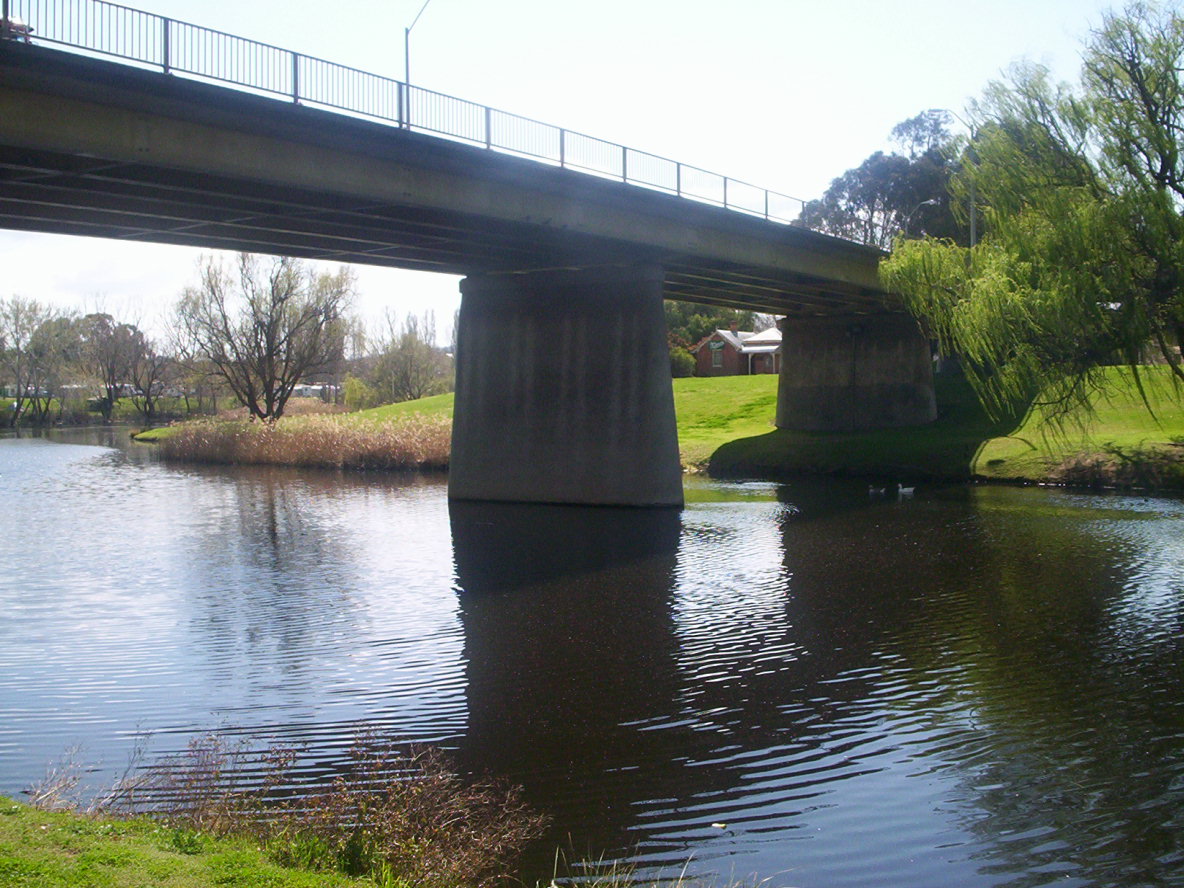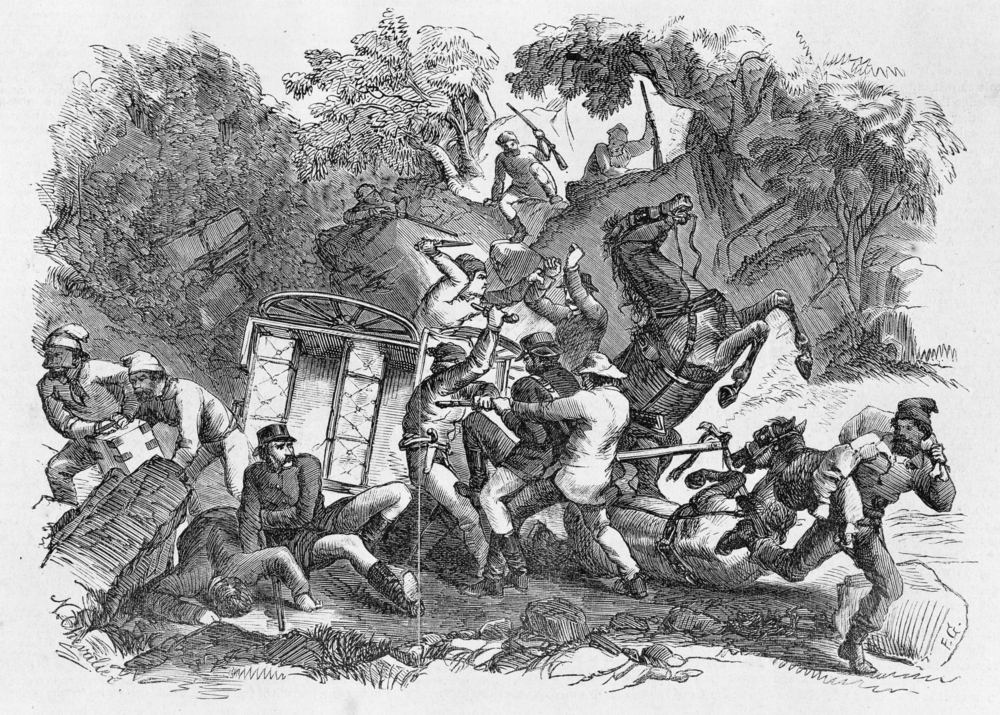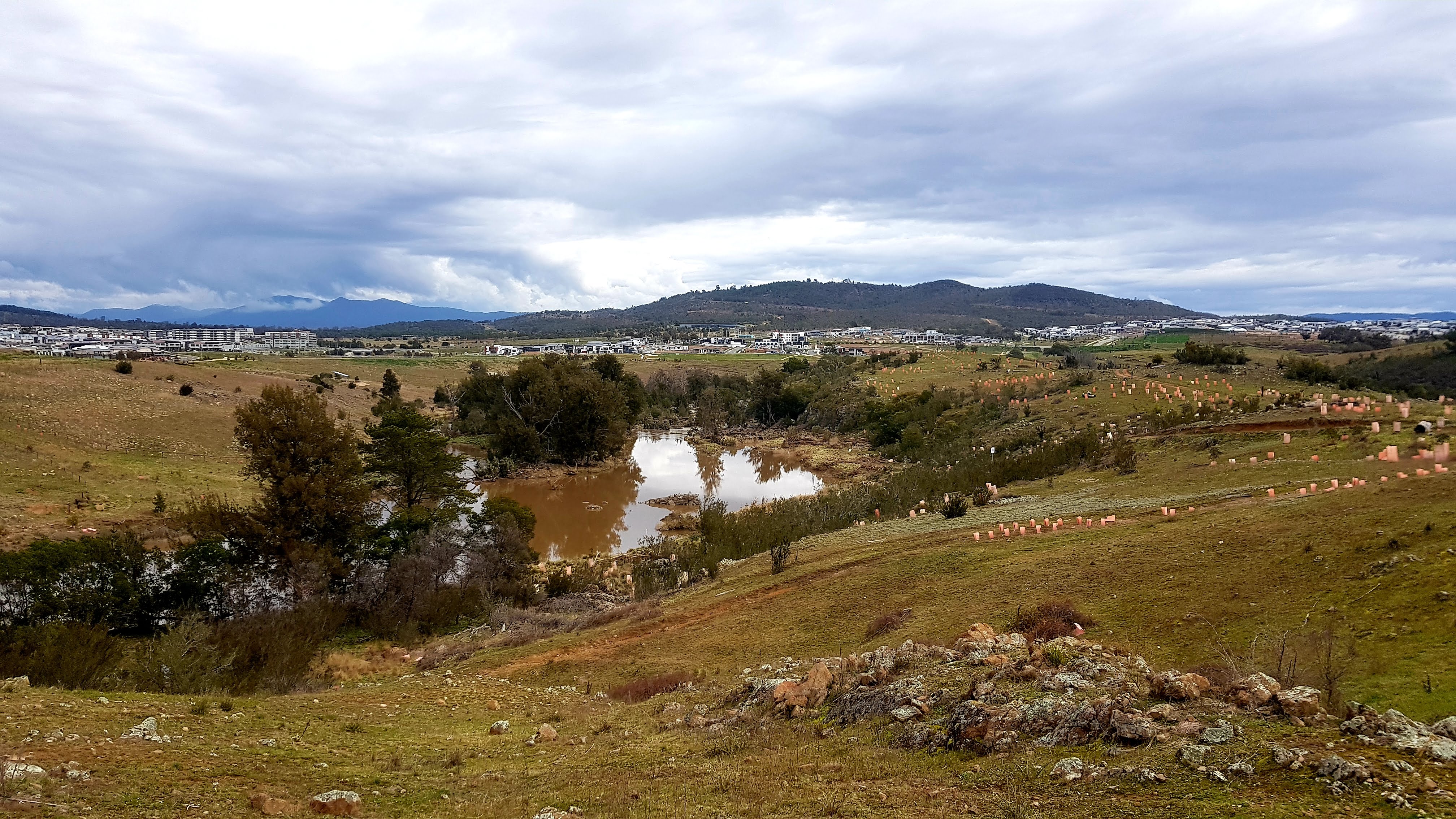|
Queanbeyan (suburb), New South Wales
Queanbeyan ( ) is a city in south-eastern New South Wales, Australia, located adjacent to the Australian Capital Territory in the Southern Tablelands region. Located on the Queanbeyan River, the city is the council seat of the Queanbeyan-Palerang Regional Council. At the , the Queanbeyan part of the Canberra–Queanbeyan built-up area had a population of 37,511. Queanbeyan's economy is based on light construction, manufacturing, service, retail and agriculture. Canberra, Australia's capital, is located to the west, and Queanbeyan is a commuter town. The word ''Queanbeyan'' is the anglicised form of ''Quinbean'', an Aboriginal word meaning ''"clear waters"''. History The first inhabitants of Queanbeyan were the Ngambri peoples of the Walgalu Nation. The town grew from a squattage held by ex- convict and inn keeper, Timothy Beard, on the banks of the Molonglo River in what is now Oaks Estate. The town centre of Queanbeyan is located on the Queanbeyan River, a tri ... [...More Info...] [...Related Items...] OR: [Wikipedia] [Google] [Baidu] |
Local Government In Australia
Local government is the third level of government in Australia, administered with limited autonomy under the states and territories, and in turn beneath the federal government. Local government is not mentioned in the Constitution of Australia, and two referendums in 1974 and 1988 to alter the Constitution relating to local government were unsuccessful. Every state/territory government recognises local government in its own respective constitution. Unlike the two-tier local government system in Canada or the United States, there is only one tier of local government in each Australian state/territory, with no distinction between counties and cities. The Australian local government is generally run by a council, and its territory of public administration is referred to generically by the Australian Bureau of Statistics as the local government area or LGA, each of which encompasses multiple suburbs or localities often of different postcodes; however, stylised terms such a ... [...More Info...] [...Related Items...] OR: [Wikipedia] [Google] [Baidu] |
Canberra
Canberra ( ) is the capital city of Australia. Founded following the federation of the colonies of Australia as the seat of government for the new nation, it is Australia's largest inland city and the eighth-largest city overall. The city is located at the northern end of the Australian Capital Territory at the northern tip of the Australian Alps, the country's highest mountain range. As of June 2021, Canberra's estimated population was 453,558. The area chosen for the capital had been inhabited by Indigenous Australians for up to 21,000 years, with the principal group being the Ngunnawal people. European settlement commenced in the first half of the 19th century, as evidenced by surviving landmarks such as St John's Anglican Church and Blundells Cottage. On 1 January 1901, federation of the colonies of Australia was achieved. Following a long dispute over whether Sydney or Melbourne should be the national capital, a compromise was reached: the new capital would be buil ... [...More Info...] [...Related Items...] OR: [Wikipedia] [Google] [Baidu] |
National Australia Bank
National Australia Bank (abbreviated NAB, branded nab) is one of the four largest financial institutions in Australia (colloquially referred to as "The Big Four") in terms of market capitalisation, earnings and customers. NAB was ranked 21st-largest bank in the world measured by market capitalisation and 52nd- largest bank in the world as measured by total assets in 2019. , NAB operated 3,500 Bank@Post locations—including 7,000+ ATMs across Australia, New Zealand, and Asia—and served 9 million customers. NAB has an "AA-" long-term issuer rating by Standard & Poor's. History Early history National Australia Bank was formed as National Commercial Banking Corporation of Australia Limited in 1982 by the merger of National Bank of Australasia and the Commercial Banking Company of Sydney. The resulting company was subsequently renamed National Australia Bank Limited. The expanded financial base of the merged entity triggered significant offshore expansion over ensuing years. R ... [...More Info...] [...Related Items...] OR: [Wikipedia] [Google] [Baidu] |
Commercial Banking Company Of Sydney
The Commercial Banking Company of Sydney Limited, also known as the CBC, or CBC Bank, was a bank based in Sydney, Australia. It was established in 1834, and in 1982 merged with the National Bank of Australasia to form National Australia Bank. History On 8 September 1834 the '' Sydney Herald'' carried a notice titled "The Commercial Banking Company of Sydney" proposing the establishment of a new bank. It began operations on 1 November 1834 and in 1848 was incorporated by an Act of the New South Wales Parliament. Sir Edward Knox was the first bank manager and later a director. Thomas Barker, a manufacturer, engineer, politician, landowner and philanthropist, was a notable director and chairman. William Rutledge (born 1806 - died 1876 Port Fairy, Victoria, Australia), merchant, banker and early settler, also became a director of the bank in 1839. The CBC grew to service the expanding pastoral and farming industries of the then Colony of New South Wales. It absorbed the Bank of V ... [...More Info...] [...Related Items...] OR: [Wikipedia] [Google] [Baidu] |
Ben Hall (bushranger)
Ben Hall (9 May 1837 – 5 May 1865) was an Australian bushranger and leading member of the Gardiner–Hall gang. He and his associates carried out many raids across New South Wales, from Bathurst to Forbes, south to Gundagai and east to Goulburn. Unlike many bushrangers of the era, Hall was not directly responsible for any deaths, although several of his associates were. He was shot dead by police in May 1865 at Goobang Creek. The police claimed that they were acting under the protection of the ''Felons Apprehension Act 1865'' which allowed any bushranger who had been specifically named under the terms of the Act to be shot and killed by any person at any time without warning. At the time of Hall's death, the Act had not yet come into force, resulting in controversy over the legality of his killing. [...More Info...] [...Related Items...] OR: [Wikipedia] [Google] [Baidu] |
Frank Gardiner
Frank Gardiner (1830 – c. 1882) was an Australian bushranger who gained infamy for his lead role in the a robbery of a gold escort at Eugowra, New South Wales in June 1862. It is considered the largest gold heist in Australian history. Gardiner and his gang, which included bushrangers Ben Hall, John O'Meally, Johnny Gilbert, Henry Manns, Alexander Fordyce, John Bow and Dan Charters, made off with a pile of cash and 77 kilograms of gold, worth about $10 million today. After several years in prison for the robbery, Gardiner was exiled and moved to the United States, where he died on or about 1882. Early life Gardiner, born Francis Christie, was born in 1830 in Rosshire, Scotland. He migrated to Australia as a child in 1834. Also aboard was Henry Monro, a wealthy Scottish businessman who would soon form a relationship with his mother, Jane.Morrison 2003 In 1835 Monro appointed his father, Charles Christie, as overseer of his property at Boro Creek, south of Goulburn. In 183 ... [...More Info...] [...Related Items...] OR: [Wikipedia] [Google] [Baidu] |
William Westwood (bushranger)
William Westwood (7 August 1820 – 13 October 1846), also known as Jackey Jackey, was an English-born convict who became a bushranger in Australia. Born in Essex, Westwood had already served one year in prison for highway robbery before his transportation at age 16 to the penal colony of New South Wales on a conviction of stealing a coat. He arrived in 1837 and was sent to Phillip Parker King's station near Bungendore as an assigned servant, but grew to resent working there due to mistreatment from the property's overseer. In 1840, after receiving 50 lashes for attempting to escape, Westwood took up bushranging. The following year, troopers captured Westwood at Berrima, where he was convicted of armed robbery and horse stealing and sentenced to life imprisonment at Darlinghurst Gaol. Westwood escaped again and continued bushranging until his re-capture in July 1841. Sent to Cockatoo Island, he led a failed mass escape, and was transported for life in 1842 to Port Arthur, Van D ... [...More Info...] [...Related Items...] OR: [Wikipedia] [Google] [Baidu] |
John Tennant (bushranger)
John Tennant was an Australian bushranger who was active around the Canberra district in the mid-1820s. Mount Tennent is named after him as it was on the slopes of this steep mountain behind the village of Tharwa where many people believed he used to hide, although this is now thought to be incorrect. Tennant was born in Belfast, Ireland, and was 29 years old when he was sentenced to transportation to Australia for life in 1823. He arrived in Sydney on 12 July 1824 on the 'Prince Regent'. He was assigned to Joshua John Moore and to join other men, James Clarke and John McLaughlin, who had helped establish Moore's property Canberry or Canberra, the first European habitation on the Limestone Plains. In 1826 Tennant and another man, John Ricks, absconded from their assigned landholder and took to the bush. In July 1827 Tennant's gang raided Rose’s outstation at the Yass River, between Murrumbateman and Gunning. Tennant was shot in the back by James Farrell. During his recuperati ... [...More Info...] [...Related Items...] OR: [Wikipedia] [Google] [Baidu] |
Bushranger
Bushrangers were originally escaped convicts in the early years of the British settlement of Australia who used the bush as a refuge to hide from the authorities. By the 1820s, the term had evolved to refer to those who took up "robbery under arms" as a way of life, using the bush as their base. Bushranging thrived during the gold rush years of the 1850s and 1860s when the likes of Ben Hall, Bluecap, and Captain Thunderbolt roamed the country districts of New South Wales. These " Wild Colonial Boys", mostly Australian-born sons of convicts, were roughly analogous to British "highwaymen" and outlaws of the American Old West, and their crimes typically included robbing small-town banks and coach services. In certain cases, such as that of Dan Morgan, the Clarke brothers, and Australia's best-known bushranger, Ned Kelly, numerous policemen were murdered. The number of bushrangers declined due to better policing and improvements in rail transport and communication technology, su ... [...More Info...] [...Related Items...] OR: [Wikipedia] [Google] [Baidu] |
James Larmer
James Larmer (b. 1808 or 1809 – d. 1886) was a government surveyor in the colony of New South Wales. Between 1830 and 1859, he surveyed land, roads and settlements in New South Wales. He was an Assistant Surveyor to the Surveyor-General, Sir Thomas Mitchell, from 1835 to 1855. In 1835, he was second in command of Mitchell’s second expedition. He is also noteworthy for his recording of Aboriginal words from various parts of New South Wales. Early life Larmer was born in Reigate, Surrey, England and arrived in Sydney in October 1829 to take up his appointment as a survey draftsman. Title deed information, from his time in Australia, shows his full name as James Gulley Larmer. Career Between 1830 and early 1835, James Larmer surveyed land, roads, streets, coastlines, creeks, rivers, and ridges in what is now greater Sydney, in nearby areas including Broke and Branxton in the Hunter, Brooklyn, Mangrove Creek, Broken Bay and Pittwater around the Hawkesbury River, and in m ... [...More Info...] [...Related Items...] OR: [Wikipedia] [Google] [Baidu] |
Oaks Estate
Oaks Estate is a township situated immediately on the northern side of the Australian Capital Territory border abutting the township of Queanbeyan in south-eastern New South Wales, Australia. The estate covers an area of approximately 40 hectares and is bound by the Molonglo River to the north, the Queanbeyan River to the east, 'The Oaks' to the west, and the Queanbeyan-Cooma railway to the south. Oaks Estate is located 12 kilometres from the centre of Canberra. The village is also noteworthy as the nucleus of Queanbeyan's industrial development during the second half of the 19th century. Oaks Estate takes its name from 'The Oaks', which was part of Duntroon, Robert Campbell's farming estate.Monaro Consultants & Burnham Planning (2001), ''Oaks Estate Planning Study'', ACT Government This makes Oaks Estate one of only a few place names in the ACT with significant connections to early colonial times. History Colonial Timothy Beard, a pardoned convict and former innkeeper from ... [...More Info...] [...Related Items...] OR: [Wikipedia] [Google] [Baidu] |
Molonglo River
The Molonglo River, a perennial river that is part of the Murrumbidgee catchment within the Murray–Darling basin, is located in the Monaro and Capital Country regions of New South Wales and the Australian Capital Territory, in Australia. Location and features The river rises on the western side of the Great Dividing Range, in Tallaganda State Forest at and flows generally from south to north before turning northwest, through Carwoola and the outskirts of Queanbeyan, where it has confluence with its major tributary, the Queanbeyan River, and then continues through Canberra, where it has been dammed by the Scrivener Dam to form Lake Burley Griffin. The river then flows to its mouth with the Murrumbidgee River, near Uriarra Crossing. Over its course the Molonglo River alternates between long broad floodplains and narrow rocky gorges several times. One of these floodplains is called the Molonglo Plain. From source to mouth, the river is traversed by the Captains Flat Road at ... [...More Info...] [...Related Items...] OR: [Wikipedia] [Google] [Baidu] |






.jpg)

